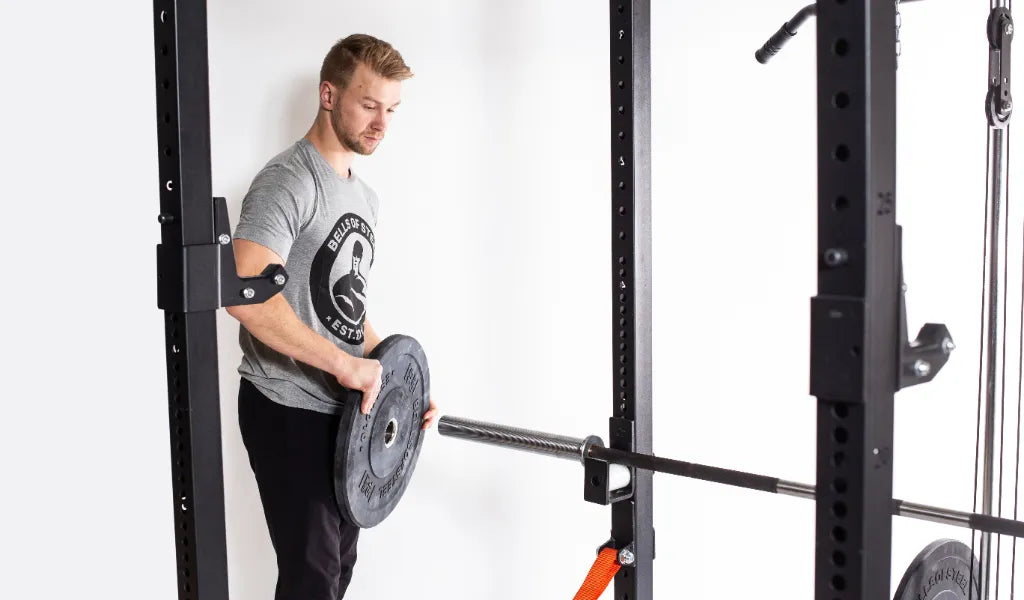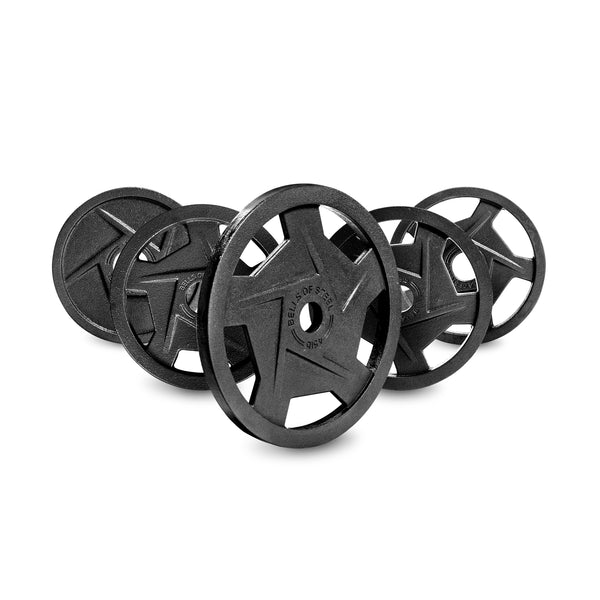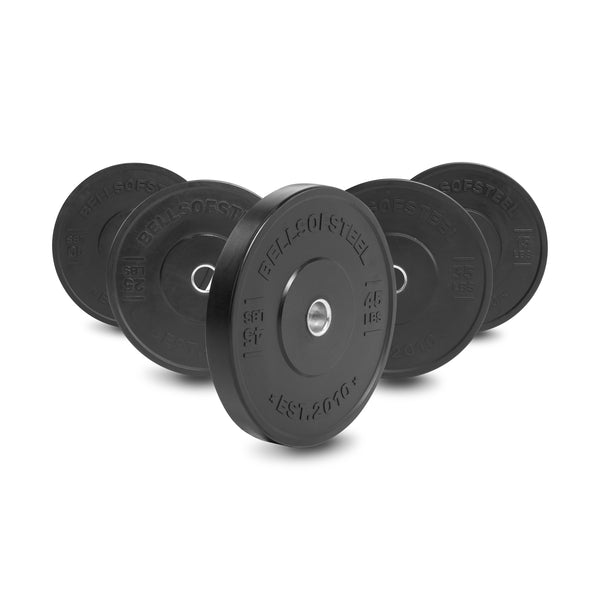So, you've built yourself a badass home gym in your garage or basement. The iron gods would be proud!
But now, you find yourself pondering a weightlifting dilemma: Can you mix those fancy bumper plates with your good ol' regular iron plates?
Fear not, my fellow gym aficionado! In this article, we'll dive into the world of plate mixing and unravel the secrets of combining bumper plates and regular plates on the same bar. Get ready for a symphony of gains!
There are a few pros of mixing bumper plates with iron plates for home gym owners, which typically boil down to convenience. Here are some of the top benefits to consider: Mixing bumper plates with regular plates unlocks a world of versatility. Bumper plates, with their rubber coating, are perfect for exercises that involve dropping or lowering the weights with a bang. Deadlifts and power cleans become a joyous dance of steel and rubber.
On the other hand, regular iron plates allow you to load the bar up for heavy lifting. By investing in both, you become the master conductor of your lifting symphony.Let's talk money, my frugal friends. Bumper plates can be a bit more expensive than regular plates. But here's where the mixing magic comes in. If you're a versatile lifter who enjoys a variety of exercises, you can save some cold hard cash by combining bumper plates with regular plates.
Load up those heavy bumper plates for the big lifts, and supplement with iron plates for smaller increments. It's like a cost-saving orchestra of gains!Sometimes, progress comes in baby steps. You may find yourself stuck in a lifting plateau, desperately seeking those tiny weight increments to keep pushing forward. Well, mixing plates has got you covered!
Regular iron plates often come in smaller weight sizes, allowing you to make those incremental jumps. Want to add just a smidge more weight? Slap on a couple of iron plates alongside your bumper plates, and voila! You're back on the gain train.
There are a few downsides to mixing plates, but with proper care, they shouldn’t be a huge deal: Ah, the pursuit of perfection! Mixing plates does come with a tiny trade-off in the form of uneven widths and heights. Bumper plates are generally larger in diameter and thickness than iron plates. It might give you a mild case of lifting OCD, but fear not! Embrace the imperfection and let your muscles do the talking. Now, my friends, let's have a serious talk about plate dropping.
Bumper plates are designed to withstand the mighty forces of gravity when you drop the weights. They have a rubber coating that helps protect your floors and dampens the noise.
However, regular iron plates are not so forgiving. Dropping them from the heavens above can lead to floor damage, angry neighbors, and a hefty repair bill. So, please, resist the urge to recreate a Thor-inspired thunderstorm in your garage.You can mix bumper plates with regular plates while lifting as long as you have no intention of dropping the bar.
Dropping mixed weights could damage your floor. Even with Deadlift Pads, the clang of iron plates on the core of competition-style or calibrated bumper plates could cause damage.
So, be gentle, yeah? You're not a rebel without a cause, my friend. And when it comes to mixing plates, your cause is safety!
Whether you're using bumper plates, iron plates, or a beautiful blend of both, secure your plates with collars. These magical devices keep everything in place, preventing any unexpected plate slides during your lifts. Stay safe, lift strong, and let those gains flow!In the grand weightlifting symphony of life, can you mix bumper plates with regular plates?
Absolutely! The versatility, cost savings, and small weight increments make it a worthy endeavor for any home gym owner.
Just remember to keep things balanced, embrace the collar game, and avoid dropping plates like a wild barbarian. So, my lifting aficionados, go forth, mix those plates, and orchestrate a symphony of gains like never before!



